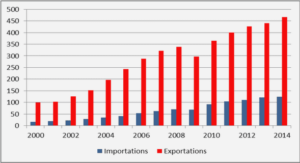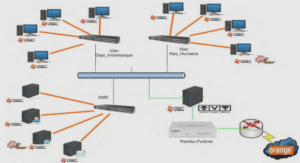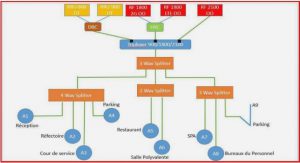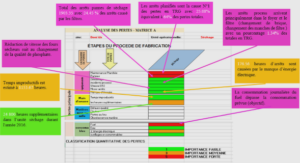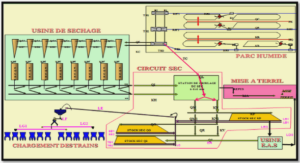Satellite Receiver Antenna
Satellite Communications
A satellite is an object which revolves around another object. Artificial satellites that are used as wireless receiver/transmitter are placed in a determined orbit around the Earth. Satellite communications are a special example of wireless communications which are popular these days.
The first human-made satellite, called Sputnik, was launched by the Soviet Union in 1957. It was made to transmit a Morse code signal repeatedly. Nowadays, satellites can receive and transmit many complex signals at the same time. They are used for Internet communications, television broadcasting, amateur radio communications, weather forecasting and Global Positioning Systems (GPS).
One of the important applications of satellite communication is Remote-sensing. Remotesensing satellites use powerful cameras to study the surface of the Earth. They are also used to study the changes of the surface of the Earth, weather forecasting and many other applications. The obtained data can be useful for researchers, government, and many industries like mining.
Orbiting and Geostationary Satellites
There are two kinds of satellites:
1. Orbiting satellites: these satellites, which are cheap to launch, have low orbits with altitude around 800 km. They are not available all the time for communication. They are used for collecting and transmitting data to fixed earth stations. Rotation of the Earth helps the satellite to cover the Earth and the antenna receivers must track the satellite.
2. Geostationary satellites: these satellites have a fixed position in relation to the earth. Generally, three satellites are needed to cover most of the Earth. Their orbit altitude is around 3600km.
The Earth Station
Every reception or transmission installation on the Earth surface is called Earth station.
Examples are briefcase satellite phones, handheld devices for mobile satellite telephony, and satellite TV reception. Generally the Earth station refers to the antenna (often a dish antenna) and all the other equipment (transmitter, decoder, and receiver) needed to communicate with the satellites. The other part of the Earth station is the application device. The application device, as a receiver, translates the signal to the information that can be shown on TV or processed by a computer. As a transmitter, they convert the information to the signal suitable for transmitting with antenna, modulating, amplifying and other necessary processing.
The antenna size can be changed according to the application. For instant a 70cm antenna is good for receiving satellite TV programs at home; but it is not suitable enough to transmit the TV programs.
Payload: antennas, transponders
Payload is all the equipment that a satellite needs to communicate such as antenna, camera, radar and electronics. For instant the payload of the communication satellite contains large antennas for transmitting signals.
Transponder is a part of the payload which involves the connected units to form a communication channel between the receiver antenna and the transmitter antenna. It takes the signal from the earth station, then filters and translates them and redirects them to the transmitting antenna. The transponders enable the communication satellite to deliver multiple channels of communication at the same time (carriers).
Satellite Receiver Antenna
In general antennas can be classified as transmitter or receiver. Although the requirement for each function is different, the antenna can be used as transmitter or receiver simultaneously.
In fact, antennas form a link between space propagation path, and transmitting and receiving equipments.In the both cases feeder connect the power amplifier to the antenna. In the transmitter mode the power PT will be reduced by passing through the feeder and antenna because of ohmic losses and mismatch losses. So PRAD is less that the power generated in transmitter. This is the same about receiver mode; PR is less than PREC because of ohmic losses and mismatch losses.
Reciprocity Theorem for Antennas: This theory shows that if an Electro-Magnetic Field applied at the terminals of transmitter antenna A generates current I in receiver antenna B, then the same current will appear in the terminal of receiver A if the same Electro-Magnetic Field applied at B. One of the important results from the reciprocity theorem is that the directional pattern of a transmitter antenna is the same as that as a receiver antenna. Another result is that the antenna impedance which is the same for both receiver and transmitter modes.
Types of parabolic antennas mounting
Symmetrical or axisymmetric mounting
In this antenna the feed is placed in the focal point. The main defect of this mounting is that the feed is placed in front of the radiation. This blocking decreases the antenna efficiency and increase the side lobes level. In addition a part of the feed radiation which is not reflected by the reflector will be emitted by the ground and makes a huge amount of antenna noise temperature. To avoid this phenomenon we should use a directional feed and a long focal length. Another weakness of this kind of mounting is that the installation of the microwave circuits behind the feed of this heavy antenna is not only difficult but also makes the same masking problem.
Cassegrain Mounting
In this mounting the phase center of the feed is located in the first focus S of the hyperbolic reflector and the other focus of the hyperbolic reflector (R) is placed on the focus of the main parabolic reflector. One of the advantages of Cassegrain antenna is that it is less cumbersome and has lower antenna noise temperature. Another advantage is that the microwave circuit can be easily located behind the feed which is located behind the parabolic reflector.
The disadvantage of Cassegrain antenna is that the auxiliary reflector makes masking effect which is negligible for small auxiliary reflector with respect to the main reflector.
|
Table des matières
INTRODUCTION
CHAPITRE 1 SATELLITE COMMUNICATIONS
1.1 Satellite Communications
1.1.1 Frequencies Used in Satellite Communication and TV Broadcasting
1.1.2 Orbiting and Geostationary Satellites
1.1.3 The Earth Station
1.1.4 Payload: antennas, transponders
1.2 Satellite Receiver Antenna
1.2.1 Receiver Antenna
1.2.1.1 Reflective Surface
1.2.1.2 Feed Horn
1.2.1.3 Amplifier (LNA/B/C/F)
1.3 Satellite Antenna Parameters
1.3.1 Directivity, Gain and Efficiency
1.3.2 The Radiation Pattern
1.3.3 The Beamwidth
1.3.4 Polarization
1.3.4.1 Orthogonal polarization
1.4 The Parabolic Reflector
1.4.1 Types of parabolic antennas mounting
1.4.1.1 Symmetrical or axisymmetric mounting
1.4.1.2 Offset Mounting
1.4.1.3 Cassegrain Mounting
1.4.2 Properties of the Parabolic Reflector (Geometry properties, Radiation, pattern, HPBW, BWFN, Gain)
1.5 Tracking
1.5.1 The effect of antenna characteristics on tracking
1.5.2 Types of Tracking
1.5.2.1 Fixed Antenna without Tracking
1.5.2.2 Programmed Tracking
1.5.2.3 Computed Tracking
CHAPITRE 2 LITERATURE REVIEW
2.1 Literature
2.1.1 Alternative Phased Array Configurations
2.1.1.1 Planar Horizontal Array
2.1.1.2 Hybrid mechanically/electronically steered array
2.1.1.3 Phased-array fed lens antenna (dome antenna)
2.1.1.4 Geodesic Sphere Phased Array Antenna
2.1.1.5 Phased Array of Mechanically Steered Reflectors
2.1.1.6 Planar Reflect-Array
CHAPITRE 3 PLANAR ARRAY ANTENNAS
3.1 Planar Array Antennas
3.2 Effect of the Element Pattern on the Specifications of the Array
3.2.1 Pattern Multiplication
3.3 Comparison of Satellite Parabolic Antenna with Planar Array Antenna
3.3.1 Calculating the parameters of the planar array antenna
3.4 Number of Elements of the Array
CHAPITRE 4 MICROSTRIP PATCH ANTENNA
4.1 Microstrip Patch Antenna Basics
4.2 Patch Shape
4.3 Patch Feed
4.4 Patch Array Loss
4.5 Size Restriction of Patch
4.6 Patch Polarization
4.7 Patch Bandwidth
4.7.1 Increasing the Bandwidth of the Patch Antenna
4.7.1.1 Effects of Substrate Parameters
4.7.1.2 Choosing Suitable Patch Shape
4.7.1.3 Using Stacked Elements
4.7.1.4 Choosing Suitable Feeding Technique
CHAPITRE 5 DESIGN OF A WIDEBAND PATCH ELEMENT ANTENNA
5.1 New Linear Polarized Patch Antenna A
5.2 New Linear Polarized Patch Antenna B
5.3 New Dual Polarized Patch Antenna C
5.3.1 Dual Polarized Patch Antennas and the Divider
5.3.1.1 Divider
5.3.1.2 Two Patch Antenna Connect to the Divider
5.3.2 Dual Polarized Patch Antenna D
5.4 Calculating the number of the elements of the array of patches
CHAPITRE 6 FABRICATION
6.1 Low Temperature Co-Fired Ceramic Technology
6.2 LTCC Fabrication
6.3 Differences in Predicted Dimensions
6.4 PCB Fabrication
6.5 Integration of the Multilayer Antenna
6.6 Experimental Measurement
6.6.1 S-parameters Measurement
6.6.2 E-Pattern Measurement
6.7 Measurement Results
6.7.1 S-parameters of the Divider
6.7.2 Linear Polarized Antenna A
6.7.2.1 S-parameters
6.7.2.2 Radiation Pattern
6.7.3 Linear Polarized Antenna B
6.7.3.1 S-parameters
6.7.3.2 Radiation Patterns
6.7.4 Dual Polarized Antenna C
6.7.4.1 S-parameters
6.7.4.2 Radiation Pattern
6.7.5 Two Dual Polarized Antennas C over the Substrate 951GreenTape
6.7.5.1 S-parameters
6.7.5.2 Radiation Pattern
6.7.6 Two Dual Polarized Antennas D over the Substrate 9K7 GreenTape
6.7.6.1 S-parameters
6.7.6.2 Radiation Pattern
CONCLUSION
![]() Télécharger le rapport complet
Télécharger le rapport complet

